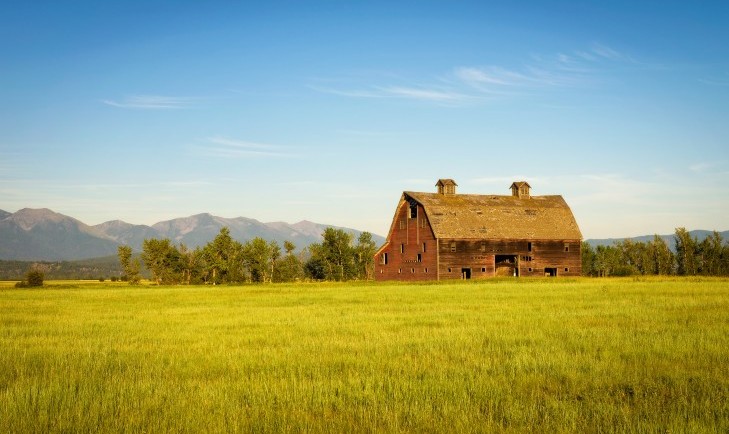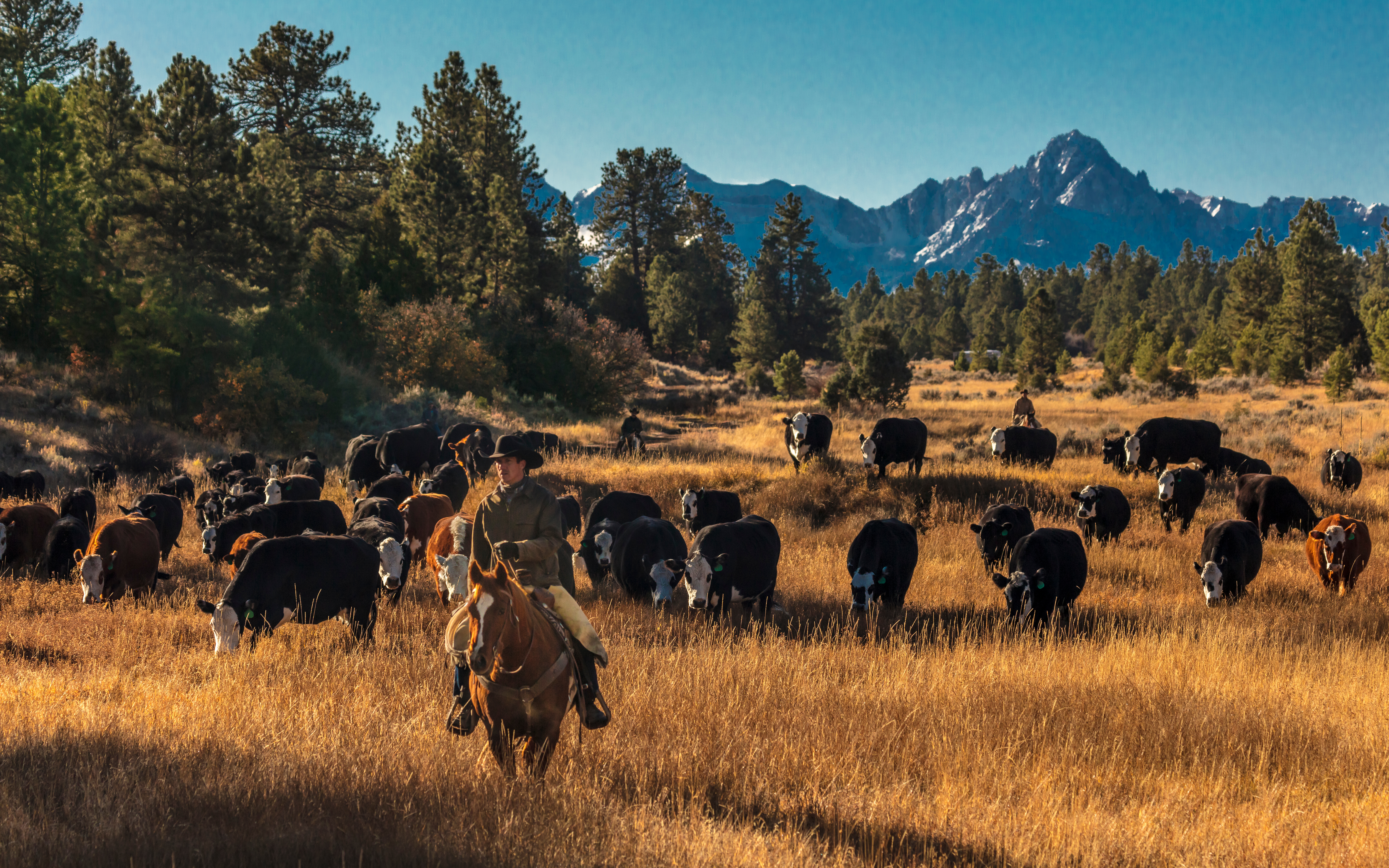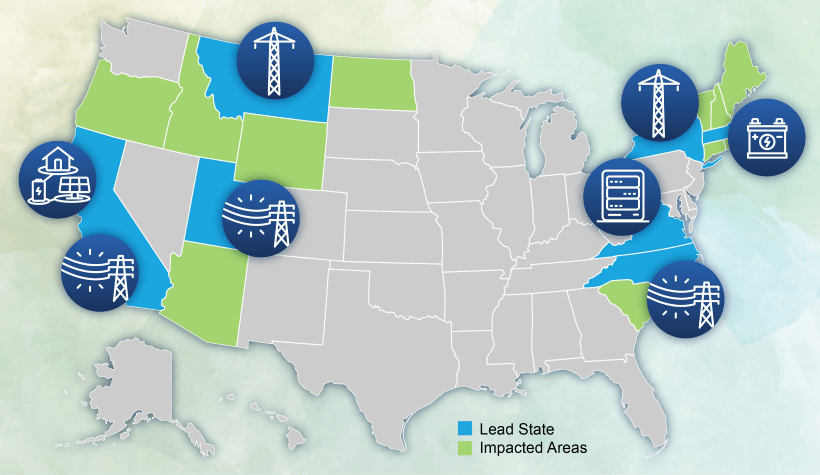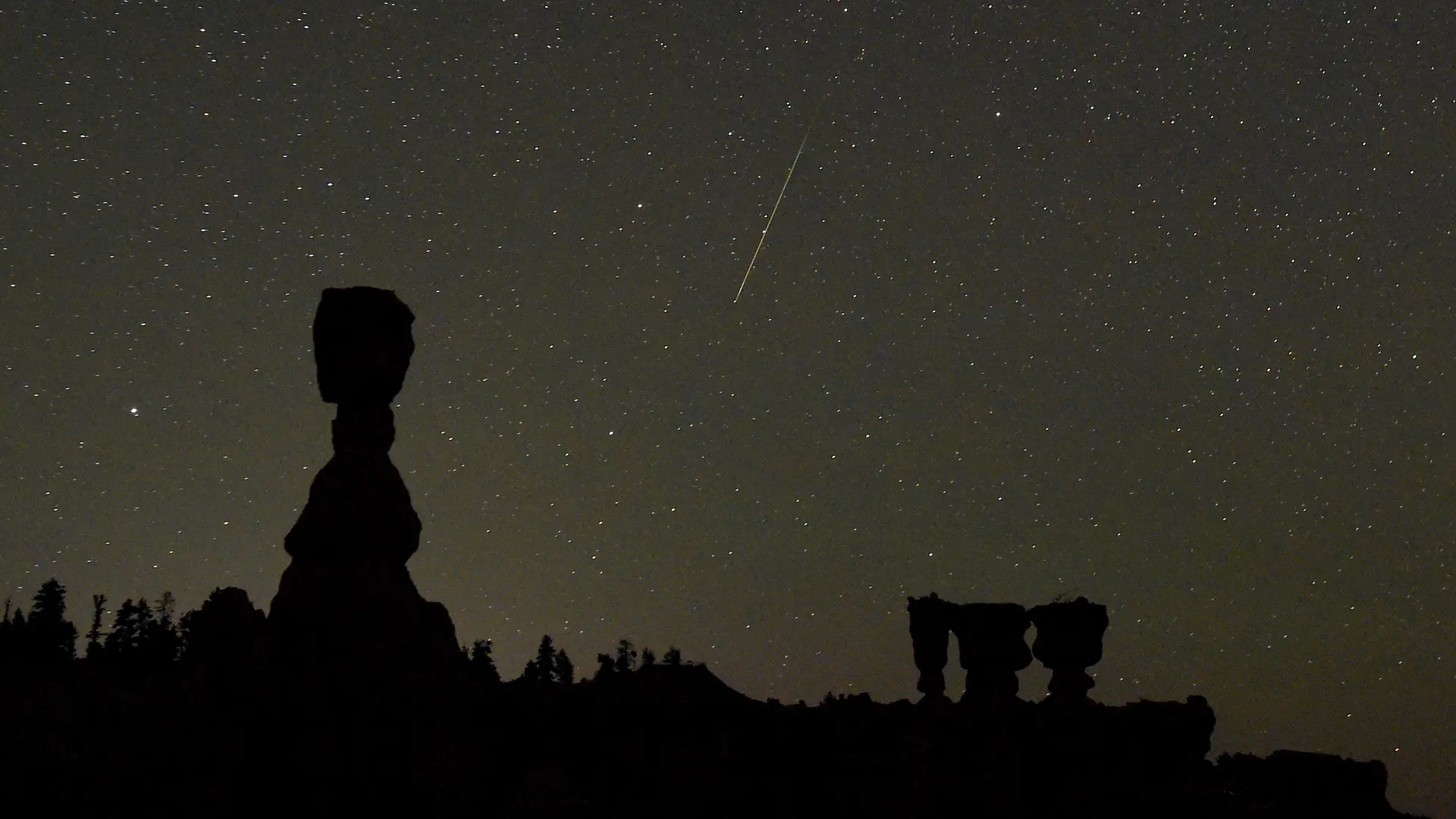08/08/24
Best of the West: The future of small farms; building grid infrastructure; a resilient state park; Perseid meteor shower; Indigenous medical training; Alaskan heat pumps; and 3D printing houses

The Western Governors' Association keeps you updated on the latest news in the West. Here are the top stories for the week starting August 5, 2024. (Photos courtesy of Adobe Stock Images, The U.S. Department of Energy, and Ethan Miller/Getty Images).
Small and medium-sized farms and ranches in the United States and the West are increasingly struggling to turn a profit and remain economically viable. Even though gross farm income in the country has continued to rise – topping $600 billion in 2022 – the lion’s share of that income tends to flow to larger and larger agricultural operations, rather than smaller family farms.
As a result, the country has seen a dramatic decrease in active farms and the amount of acreage being farmed. Compared to 1981, Secretary of Agriculture Tom Vilsack says that there are more than 430,000 fewer farms operating in the U.S., with 141,000 shutting down just between 2017 and 2022. In terms of acreage, the country has lost 140 million acres of farmland since the 1980s, equal to the landmass of Florida, Georgia, South Carolina, North Carolina, and Maryland combined.
Secretary Vilsack, who spoke at WGA’s Winter Meeting in Jackson Hole, points out that American farmers are now being forced to either “get big, or get out,” as small and mid-sized farms have seen their economic prospects shrink.
In the face of economic challenges, smaller producers are looking to new revenue streams and creative economic strategies to keep their farms and ranches going.
For one, farmers and policy makers have identified farms as a key factor in the drive to reduce greenhouse gas emissions. Incentives for “climate-smart agriculture” and other climate strategies are driving new revenue streams and bringing about new markets for farmers.
The federal government is investing $19.5 billion in programs to help producers implement climate-smart agriculture and conservation practices, including making $3 billion available in fiscal year 2024.
The funding is intended to support farmers and ranchers so they can stay on their land while implementing practices to reduce greenhouse gas emissions and increase carbon sequestration. It is also designed to promote soil health, water quality, pollinator and wildlife habitat and air quality improvements.
air quality improvements.
Efforts are also underway to support the production and distribution of “climate-smart commodities,” which are produced using practices that reduce greenhouse gases or sequester carbon.
Federal partnerships to the tune of $3 billion are helping advance these efforts while providing market opportunities for climate-oriented growing. Similar federal-state collaborations are supporting resilient local and regional food systems, in order to help small producers sell to local buyers, while giving consumers access to more fresh, locally-grown food.
Additionally, new technologies like sustainable aviation fuel are showing promise as a way to utilize farms and agricultural products while giving farmers a way to diversify their income.
Ethanol-derived fuels from corn and biowaste from farms and ranches can be converted into aviation fuel and can reduce carbon emissions from air travel by as much as 80%. The federal government recently made an ambitious push to expand the use of sustainable aviation fuel to 3 billion gallons a year by 2030, which is 100 times the current annual usage. Robust tax incentives have been put in play to help this effort, and the incentives aim to specifically help those farmers that use “climate-smart” practices, such as no-till techniques, planting cover crops, and implementing enhanced efficiency fertilizer.
Additionally, farmers and ranchers in the West are increasingly taking advantage of new markets for carbon credits, which allow farms to receive compensation for sequestering carbon on their land.
In Colorado, rancher Dallas May has taken advantage of these new markets to sustain his family’s cattle ranch. May Ranch has combined a conservation easement on its land with the sale of carbon avoidance credits by not disrupting thousands of acres of grassland, which acts to sequester carbon. The ranch partnered with Ducks Unlimited on their recent venture to develop and sell carbon credits for preserving grassland.
With the conservation easement and carbon credits helping chip away at the bills, May Ranch has been able to successfully protect plant and wildlife habitat on the property. The Ranch is certified by the Audubon Society as a bird-friendly cattle ranching operation, it’s a winner of the prestigious Leopold Award for its conservation work, and researchers at the Denver Botanic Gardens have identified as many as 90 plant species on the ranch that have never been identified before in Prowers County.
The Decarbonizing the West initiative of Wyoming Governor Mark Gordon examined the significant role of these natural carbon sequestration strategies in capturing and storing atmospheric carbon, and offered several recommendations to more effectively take advantage of them.
Additionally, just this week the USDA announced changes to the Farm Service Agency’s Farm Loans Program, which looks to increase loan availability for farmers. The program should particularly help new and younger farmers, in a time when the average age of American farmers continues to creep up. The program will simplify financing and decrease the reliance on personal assets as collateral.
Check out WGA's Policy Resolution on Western Agriculture to learn more about Western Governors' policy and advocacy around farming and ranching.
Building the grid: the Department of Energy announced the second round of funding from its Grid Resilience and Innovation Partnerships Program, which helps build out essential grid infrastructure. The first round funded 58 programs with $3.5 billion back in October 2023, and last week’s announcement will invest $2.2 billion in 18 states.
In the West, the program’s second round will provide $700 million for a project to connect grid infrastructure across Montana and North Dakota, known as the North Plains Connector. It will also boost transmission capacity in Utah, which will support 700,000 utility customers.
In California, the California Energy Commission will undergo a large-scale expansion of transmission capacity, and the Tribal Energy Resilience and Sovereignty Project will help fund microgrid construction for four tribes in Northern California. It will help an outage-prone area build reliable energy infrastructure through tribal-owned and operated microgrids.
Resilient state park: the Dos Rios State Park in California is the first new state park in the Golden State in more than a decade. Unlike most parks, Dos Rios does more than open up green space to the local community.
Thanks to its unique design that works in concert with its natural surroundings, Dos Rios will protect nearby communities from flooding while supporting native wildlife.
Located in California’s central valley, Dos Rios is situated in a floodplain at the confluence of the Tuolumne and San Joaquin rivers. While alfalfa and wheat farms used to occupy the space, Dos Rios has recently been left to return to its natural state before farms and towns cropped up in the area.
Now instead of fighting off flooding, managers let Dos Rios flood each spring, which in turn stimulates the growth of plants like cottonwoods, mugwort, and gum plants. In addition, the park now functions as a release valve for floodwater in the area, allowing the park to flood and easing the flows before they threaten downstream communities like the city of Stockton.
The park is also welcoming local Indigenous groups to plant native species in the park like Valley Sedge, famously used in Indigenous basket weaving.
Meteor shower: the Perseid meteor shower, which becomes visible each summer as the Earth passes through debris left behind by the Swift-Tuttle comet, will reach its peak between August 10th and 11th. The Perseids are known for their exceptionally bright fireballs, often visible streaking across the entire horizon.
visible streaking across the entire horizon.
The viewing this summer should be particularly clear, as the moon will be reaching its new phase during the peak. Meteorologists estimate that if you’re able to get far away from city lights, 40 to 50 meteors will be visible every hour.
There is no better place to see the Perseids than the West, which boasts the country’s highest concentration of International Dark Sky Places. Check out the official map of dark sky parks and communities across the region.
Indigenous medical training: Indigenous students in the West can now access a new program aimed to jumpstart careers in the medical field. The program, run by Native American Jump Start, will offer three-to-six-month trainings to become medical assistants, surgical techs, dental assistants, pharmacy techs, and more.
The program will award grants that could make the entire program free for qualified students. It will help provide Indigenous students with a head start in jobs that are stepping stones into the medical field, and positions that can often be hard to fill. Native communities often face chronic healthcare shortages, and this program aims to help fill the gap by helping community members practice medicine in their own community.
The program will begin enrolling students in Wyoming before expanding to neighboring tribes on the Great Plains and Navajo Nation.
Alaskan heat pumps: southeast Alaska will receive $38.6 million to install heat pumps in more than 6,000 homes in the region. The funding will prioritize installing heat pumps in rural, distressed, and tribal communities.
An estimated 3.3 million gallons of heating oil will be eliminated by the new heat pumps, and household heating bills will be cut by between a quarter and a half. The nonprofit overseeing the program estimates that the total savings for Alaskan families over the 15-year lifetime of the heat pumps could total nearly $1 billion.
3D printing houses: the Texas-based company ICON is rolling out brand-new equipment that can 3D print 27-foot-tall, two-story buildings. The technology, known as Phoenix, is guided by artificial intelligence “architects,” and it uses a high-strength building material that the company says reduces carbon by 24%.
3D printing houses offers the potential for cheaper and faster construction projects, which can sometimes be completed in a matter of days. Since 2018, ICON has printed more than 140 homes in the U.S. and Mexico.